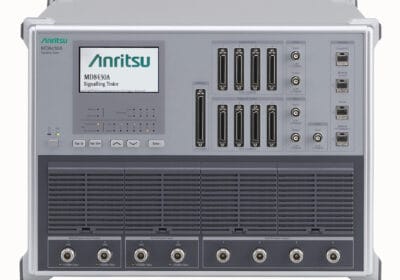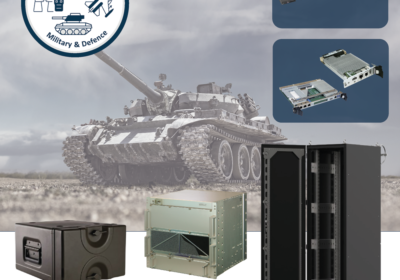The UK has the largest number of SME aerospace sector companies in Europe. But if smaller manufacturers are to benefit from the stellar growth predicted for the UK’s space industry, they need the power of ERP, writes Sara Duff, UK Country Manager at MRPeasy.com.
Britain has a thriving space industry, worth £16.4 billion in 2018/19, around 5% of the global market, with strong links to NASA, the European Space Agency and others. Government is backing the industry to double market share by 2030, and there are even plans to establish a UK launch site.
Manufacturing in the sector is worth over £2 billion. That includes launch vehicles and subsystems, satellite payloads, scientific instruments, ground-based systems, test and research equipment and innovative materials from composites to laboratory-grown crystals and ‘textiles’ knitted in tungsten wire.
Many of the organisations involved are highly specialised around particular technologies or inventions. They are often spin-outs from universities and other research organisations, and their highly-skilled workforces may struggle with the transition from an R&D environment to that of manufacturing, with its commercial customers and unforgiving deadlines. Even for those with manufacturing experience, the space industry presents some particular challenges, which can only be addressed from a solid business and manufacturing process platform.
It is essential that firms have some basic manufacturing control systems in place, for which MRP/ERP is the foundation. By using this as a core on which other business processes can be mounted, firms can ensure robust plans and schedules. They can synchronise these, automatically, with the systems of other supply chain partners up and down stream, receive and communicate change and the effects of change, and ensure that everyone internally and externally is working to a single version of the truth.
Accurate production planning and reporting is essential and ironically this can be made more difficult because development timescales can be very long – decades for a major project such as a space telescope.
In this period there may be almost constant design and engineering change, with consequent needs to re-plan and reschedule. However, deadlines or launch dates are immutable: launch vehicle space, often shared with other projects, is booked years in advance. There will be many intermediate deadlines, which also have to be met. MRP/ERP enables companies continuously to track changes and recalculate their effects on lead times and delivery dates. This reveals the need for actions such as the deployment of extra resources, resequencing of production steps, resourcing to a supplier or contractor offering shorter lead times, and so on.
Manufacturers will find themselves a part of an extremely complex, multinational supply chain. Bought-in components and assemblies may themselves be still under development and effective communication of this between suppliers and customers has to be created. MRP/ERP enables, even forces, firms to create production plans and proposals in formats which can be easily and automatically communicated to partners for incorporation in their own systems, and of course vice-versa. No time-consuming and error-prone rekeying of data from random or out of date spreadsheets.
Manufacture in the space sector isn’t just making, buying and assembling parts. There is a need for extensive testing, of materials, assemblies and prototypes as well as finished products. This can involve unusual, even unique, testing equipment – vacuum chambers, cryogenics, vibration and acceleration testing – often by specialist sub-contractors with limited availability. Manufacturing itself is often a curious combination of highly automated technology and very skilled manual operations some of which may have to be outsourced. MRP/ERP gives the ability to plan and procure these scarce and specialist technical and human resources, internal and external, as a seamless part of the production process itself.
MRP/ERP offers a comprehensive real-time view of inventory, both at hand and on order, with its status and condition. This goes well beyond boxes and sheds – production, test, and transport may all have to be carried out under rigorous clean-room conditions, which have to be monitored and audited. There may be security requirements to be observed – some space work is, of course, classified, while many of the materials used are intrinsically valuable, for example, we send a surprising amount of gold into orbit. MRP/ERP ties procurement requirements and inventory management activity closely to production, so that stock-outs can be avoided while carrying lower inventory (much of which is eyewateringly expensive). Materials management can be driven by real lead times and production schedule requirements – and early warnings flagged if procurement performance is going off-plan.
Whilst we tend to imagine space equipment as essentially ‘one-off’, this isn’t necessarily the case. Even a ‘unique’ satellite will have prototypes and test models, and quite possibly one or more exact copies that remain earthbound but can be used for trouble-shooting and simulation during the craft’s operations. And there is genuine volume production – ‘swarms’ of small communication satellites such as those being launched by Space-X, and by OneWeb. The UK government has a 40% stake in the latter, a planned swarm of 648 satellites (around 80 of which are already in orbit). Each has a life expectancy of around 5 years, which implies series production well into the future. Firms can use MRP/ERP reports to monitor performance through the production run, revealing scope for improvement in cost and efficiency.
Manufacturing for space is, then, a complex business. If there is a failure, of equipment or in the supply chain, not only can this be ruinously expensive but it may leave a trail of hopeful scientists whose life’s work has been wasted. Systems based on a sound MRP/ERP platform greatly reduce the risk of failure and give early warning of the need for remedial action.
Fortunately, MRP/ERP these days is not rocket science. Systems such as those from MRPEasy are affordable and scaleable; they don’t require specialised in-house IT support; they are readily configurable to the needs and concerns of the user; and crucially they can present information, reports and alerts in graphical and intuitive ways that are actionable by scientists who may have brains the size of planets, but aren’t necessarily well-versed in how manufacturing operations work.
More than 3,000 aerospace companies operate in the UK, which also has the largest number of aerospace sector SME companies in Europe, providing over 282,000 jobs directly and indirectly. Domestic companies include BAE Systems, GKN, Meggitt, QinetiQ, Rolls-Royce, Ultra Electronics, etc. While MRPeasy does not provide an ERP solution these large corporations, they may however decide to recommend MRPeasy to their suppliers. For this category of customers, MRPeasy provides a full-featured ERP solution, which means that they do not need any other additional software for managing their manufacturing or distribution business.








